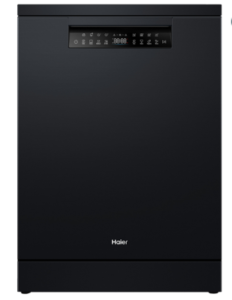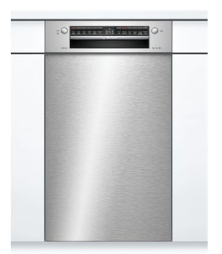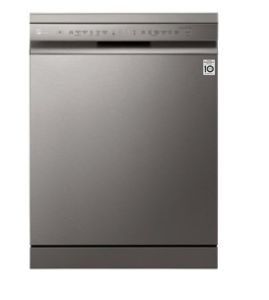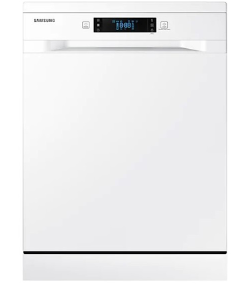The cost of running household appliances quickly adds up. If you’re looking to save money, or reduce your carbon footprint, taking into account the energy usage of your appliances is crucial, as the energy efficiency of your appliances can play a big role in the ongoing electricity costs of your home. And while dishwashers are not the biggest culprits in guzzling your home’s power, they are one of the most-used whiteware appliances. Daily loads of dirty dishes soon add up to increased water and energy consumption.
So if you’re in the hunt for a new washing machine, it pays to consider just how energy-efficient it is.
What do you mean by energy-efficient?
Appliances in New Zealand are given an energy star rating out of six. Some models qualify for a “super efficiency” rating of up to ten stars. The higher the stars, the more energy-efficient an appliance is considered. Meaning, it sucks up less power when in use.
The water efficiency labelling scheme (WELS) is also used to measure relevant appliances’ water consumption. Like the energy star rating, the WELS is measured out of six stars.
A dishwasher with both high energy efficiency and water efficiency will use less power and water while in use. Not only will this save you money, but it will help reduce the carbon footprint of your machine.
The most energy-efficient dishwashers
To help you in your hunt for a new washer, we’ve listed some of the most energy-efficient dishwashers from our ‘best-rated dishwashers’ brands that are currently available, in order of lowest annual running costs.
Annual running costs are estimated on the assumption of one load daily, and have been sourced via Gen Less’ Efficient Appliance Calculator. Estimations* have been made where annual running costs are not available.

1. Fisher and Paykel DD60DTX6I1 ($2651)
-
-
-
-
- Annual running costs: $29
- Energy star rating: 4
- WELS: 5.5
- Place settings: 14
- Double draw
-
-
-

2. Haier HDW15F3B1 ($1209)
-
-
-
-
- Annual running costs: $51
- Energy star rating: 4.5
- WELS: 5.5
- Place settings: 15
-
-
-

3. Bosch SPU6IMSO1A ($1888)
-
-
-
-
- Annual running costs: $51
- Energy star rating: 3.5
- WELS: 4
- Place settings: 11
-
-
-

4. LG XD5B14PS ($1129)
-
-
-
-
- Annual running costs: $57
- Energy star rating: 4
- WELS: 5
- Place settings: 13
-
-
-

5. Samsung DW60M6045FW ($699)
-
-
-
-
- Annual running costs: $64
- Energy star rating: 3.5
- WELS: 4.5
- Place settings: 13
-
-
-
How can I lower the energy use of my dishwasher?
There are plenty of little tips and tricks to help limit the amount of power used by your dishwasher. A few to try are:
- Fill it up before you run it. If you have to run it half-full, use a half-load setting, if available
- Clean the filter regularly. Use a brush and hot soapy water. Check the spray-arm holes aren’t clogged
- Match the setting to the load. If you have an eco setting, try it for less-dirty dishes and save the default setting for nasty loads
Finding the best power provider
While energy-efficient appliances are a great way to save you money, you also need to be getting a good deal on your power. While less than half of Kiwis believe they are getting a good deal on their power, only 12% of us have actually changed our electricity provider in the last 12-months.
Ultimately, finding affordable power involves shopping around. And the fact that you’re reading this means that you’re already on the right track to finding a great deal on power. But when comparing power companies, it’s important to consider the broader picture – don’t become too focused on finding a deal with a big prompt payment discount or special perk. Be sure to balance all the rates, discounts, fees and contract periods when making a decision, as well as more personal factors, such as customer service and support.
Compare with Canstar Blue
Canstar Blue’s latest review of NZ power companies compares them on customer satisfaction. The table below is an abridged version of our full results, available here.
^ By clicking on a brand or 'details' button, you will leave Canstar Blue and be taken to either a product provider website or a Canstar Blue NZ brand page. You agree that Canstar Blue NZ’s terms and conditions apply (without limitation) to your use of this service,to any referral to a product provider from our website, and any transaction that follows. Canstar Blue may earn a fee for referrals from its website tables, and from sponsorship (advertising) of certain products. Payment of sponsorship fees does not influence the star rating that Canstar Blue awards to a sponsored product. Fees payable by product providers for referrals and sponsorship may vary between providers, website position, and revenue model. Sponsorship fees may be higher than referral fees. Sponsored products are clearly disclosed as such on website pages. They may appear in a number of areas of the website such as in comparison tables, on hub pages and in articles. Sponsored products may be displayed in a fixed position in a table, regardless of the product’s rating, price or other attributes. The table position of a sponsored product does not indicate any ranking, rating or endorsement by Canstar Blue. See How we are funded for further details.
Canstar Blue NZ Research finalised in April 2023, published in June 2023.
See Our Ratings Methodology
Compare electricity providers for free with Canstar Blue!
About the author of this page
This report was written by Canstar Content Producer, Caitlin Bingham. Caitlin is an experienced writer whose passion for creativity led her to study communication and journalism. She began her career freelancing as a content writer, before joining the Canstar team.
Enjoy reading this article?
You can like us on Facebook and get social, or sign up to receive more news like this straight to your inbox.
By subscribing you agree to the Canstar Privacy Policy



Share this article